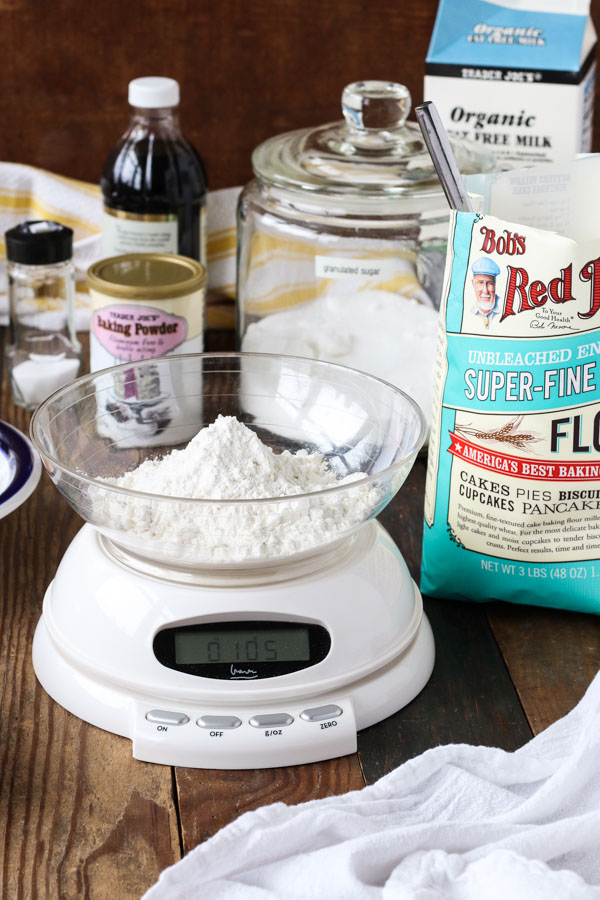
so, if you’ll bear with me, i’m going to proselytize for a hot minute. (don’t worry, there are lots of pictures related to cake and none related to politics – i think the rest of the internet has that more than covered.)
i know you’re probably still wary so let me come right out and say it: i love baking by weight, using a kitchen scale instead of measuring cups, and i strongly encourage you to give it a try.
this all started a few years ago with a friend of mine who was boldly venturing into gluten-free baking. this was at the very early stages of the gluten-free revolution, so there were some resources out there, but “gluten-free” wasn’t a buzzword/trend/splashed all over the internet the way it is today. at the time, there were very few (if any?) good gluten-free flour substitutes so my friend had to buy 27 different kinds of flour and additives and start experimenting to figure out which ones worked for what.
through all of these trials, she learned that one of the keys to success in converting a gluten-filled recipe into a gluten-free recipe is to weigh the ingredients, especially the flour(s), rather than rely on cup measurements. using this method, she was able to make some of her favorite traditional treats into gluten-free versions that she could (and would actually want to) eat.
though i’m not gluten free, i do have a penchant for sneaking whole wheat flour into baked goods, as these biscuits, scones, muffins, and cake will attest. which brings me to my first reason for baking by weight:
baking by weight allows you to substitute ingredients, including gluten-free flours, more successfully.
whether you’re doing this because you like to experiment and try to sneak a bit more nutrition into your meals (hi!) or because you have recipes that your taste buds love that don’t love your GI system back (hi 3.5 million people in the US!), baking by weight makes it far easier to swap ingredients.
a quick scan of the ingredient weight chart over on the king arthur flour site (which is one of my favorite and most visited sites on the whole wide interwebs, by the way) shows how things could go awry if you were using cup measurements.
let’s say your traditional recipe calls for “1 cup flour”, intending for you to use 1 cup all-purpose flour, which weighs 120 grams/cup, and you decide to substitute in 1 cup gluten free flour, which weighs 156 grams/cup. hello dry and crumbly baked good! in this example, if you measured the flour using cups, you would end up using about 1/4 cup too much flour. this leads into my second reason for baking by weight:
baking by weight is much more precise and leads to more accurate and reliable results every time.
i think in theory accuracy and consistency of results is the most compelling reason to measure ingredients by weight rather than volume. i say ‘in theory’ because when we get down to the one about creating fewer dirty dishes, it’s going to be difficult to argue that there could be any reason more compelling, but i’m getting ahead of myself.
since accuracy and resulting consistency of your baked goods is theoretically the most compelling reason to bake by weight, that was the reason i sought to demonstrate here with my little cake experiment. i used my yellow cake with chocolate frosting recipe and made one half of the cake with flour measured by weight and the other half of the cake with flour measured by volume.
spooning flour into the measuring cup and then leveling it off with a straight edge is a more reliable method of volume measure than dipping the measuring scoop into the flour and leveling it off, since the flour can get more compressed that way.
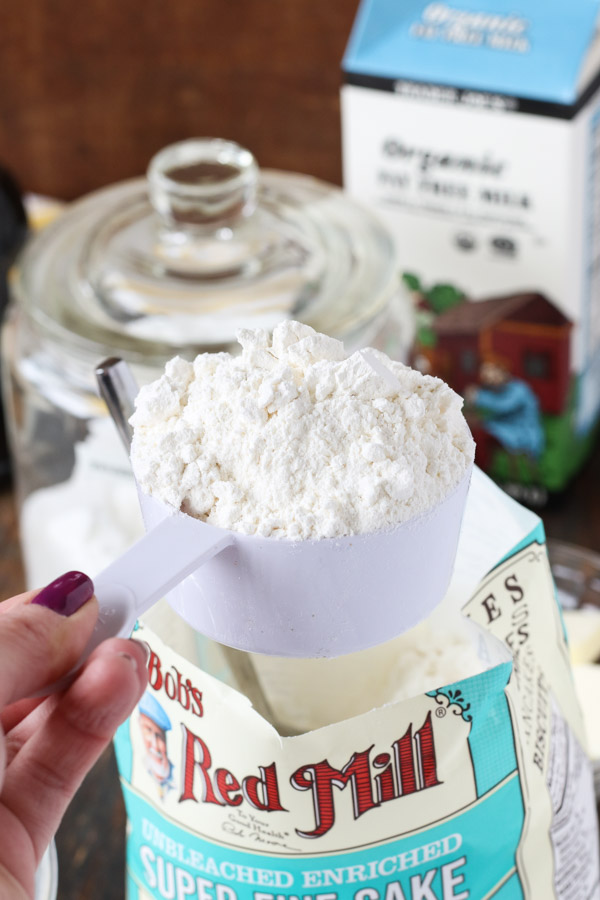
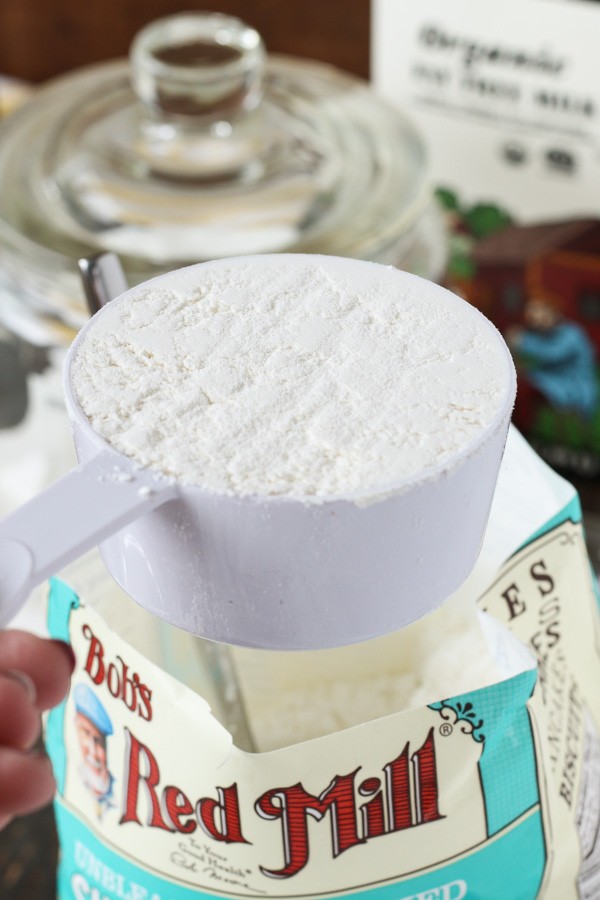
even when i used the more accurate spoon and level method, my cup had 11 grams more flour than it should have. depending on your familiarity with the metric system, that may not sound like a lot (or it may sound like some unknowable amount, somewhere between a paperclip and a brick), but, suffice it to say, it’s about 10% more flour than the recipe called for.
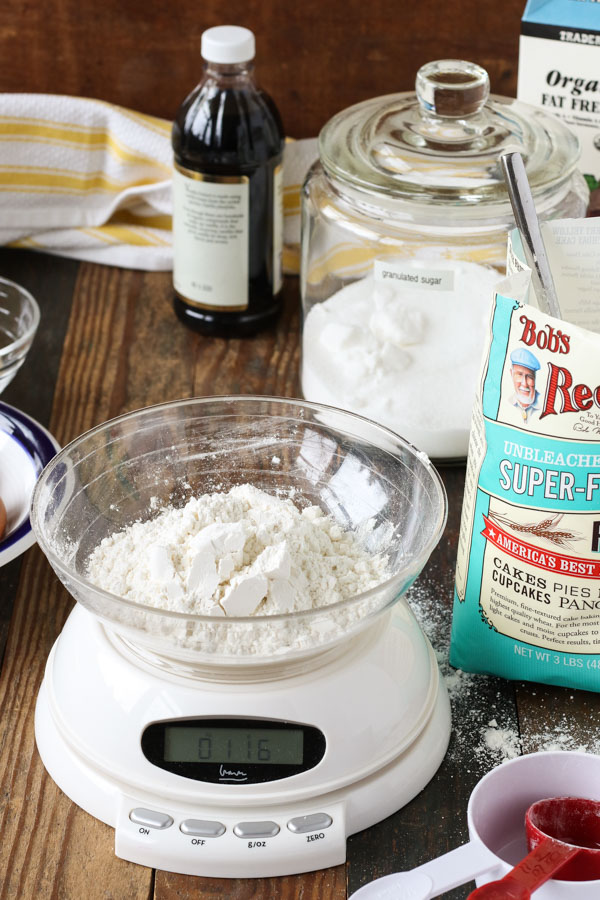
unsurprisingly then, when i tasted both cake layers before frosting them (you know, for science), the cake with more flour (left, below) tasted, well, more floury. the layer with the correct amount of flour (right, below) had a slightly more pronounced buttery/sugary/yummy taste as compared to the over-floured layer.
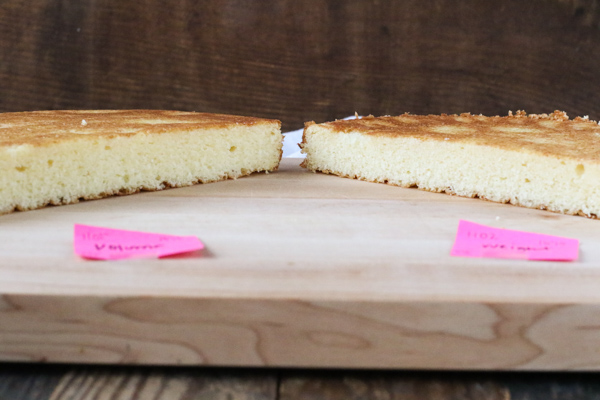
the difference wasn’t huge, i grant you, but if you were to bake a recipe like no-knead overnight rosemary bread, which calls for 430 grams of flour, and you crammed in an extra 10% flour (43 grams), that’s about an extra 1/3 cup, which is significant in a recipe where the hydration (ratio of water to flour) is so important.
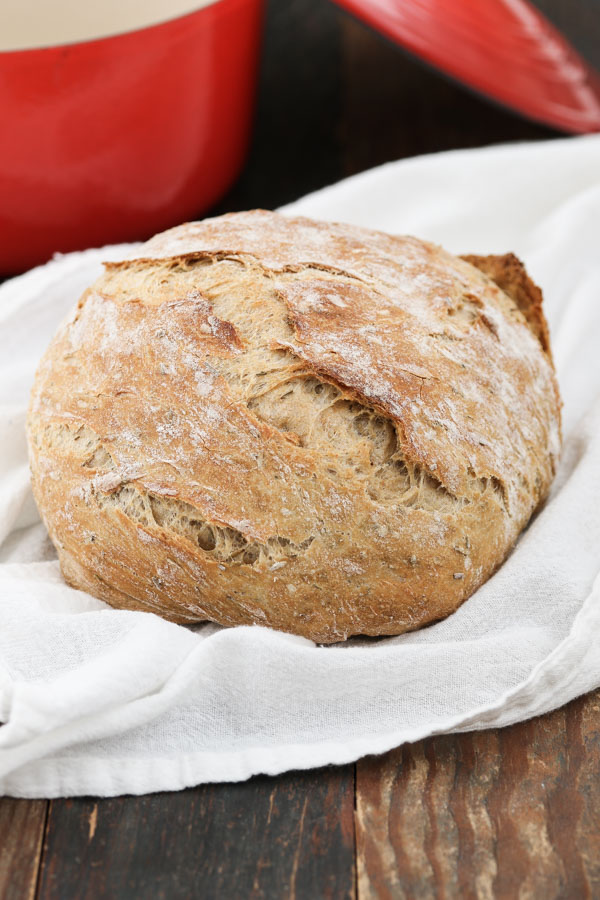
also, flour is relatively willing to come out of measuring cups. peanut butter, honey, and shortening – not so much. assuming you get the right amount of peanut butter into the measuring cup, you’re a magician if you can get it all back out again and into the bowl of cookie dough. contrast this with either adding the peanut butter directly to the mixing bowl sitting on top of the scale or scraping the peanut butter out of a small bowl with shallow sides that your rubber spatula can actually swipe clean.
since i alluded to the fact that many of us who were educated in the US are not super familiar with the metric system, i should explain why i keep talking about these mysterious grams, rather than ounces, in my quest to convert you to baking by weight:
baking by weight, in grams, makes it much easier to scale recipes up and down.
back when i was testing all of those different yellow cakes to find the best recipe, splitting all of the recipes in half using grams was easy, as compared to trying to figure out what half of 1 3/4 cups is. now, you may not need to bake five different half cakes, but perhaps you have a favorite brownie recipe that calls for an 8 x 8 pan but your friend only has a 9 x 13 pan – grams to the rescue! or perhaps your favorite cookie recipe calls for three eggs but you only have one egg and reallyreally want cookies NOW. grams! much easier than trying to divide 2 1/4 by 3.
in that last example, the 2 1/4 could either be cups or ounces. neither of them are particularly amendable to being divided without more thought than i want to give to fractions when i’m just trying to make yummy cookies. so if i’ve convinced you to get a scale, do yourself a favor and get one that switches easily between grams (::heart eyes emoji::) and ounces (which can be useful too).
we’re winding up here, i promise. which actually brings me to my next reason to love baking by weight:
clean up is easier when baking by weight.
with measuring cups, your two choices are either to hand wash each and every one you used (don’t even get me started on those rings that tie them together so they all get dirty, used or not…) or to perfectly balance them in the dish washer so they don’t all fall through the rack and melt on the heating element or fill up with nasty dirty dish water. which we all know is just basically not possible.
contrast this with just washing the bowl you were using anyway to mix all of the ingredients, or at most, one other bowl that you can put in the dish washer, hassle free.
and depending on your set up, because you’re not leveling flour back into its container, you (*i*) wind up spilling less flour all over the counter.
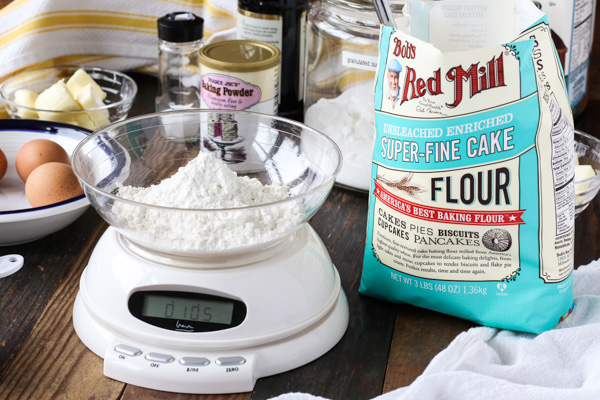
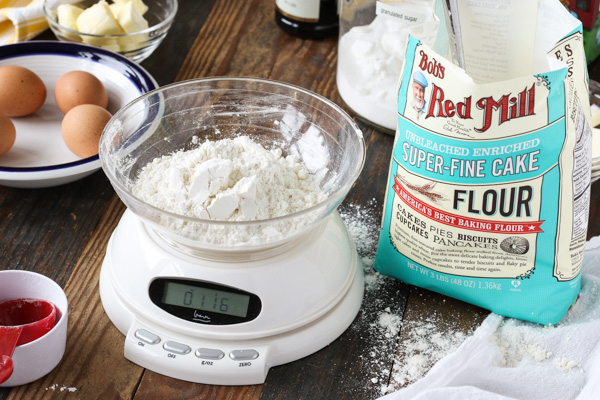
and finally, reason number 5:
baking by weight gives you serious street cred.
don’t believe me? king arthur flour, serious eats, and (three time james beard award winner) rose levy beranbaum are all on team baking by weight, just to name a few.
ok, are we ready to try baking by weight? if so, cook’s illustrated likes this scale from oxo the best (and you may recognize him from the photos if you clicked on that serious eats link above). i have to admit, i don’t have this scale. i bought a scale at target a hundred (read: probably ten, plus or minus) years ago and he’s still going strong (though he’s no longer available for purchase, as far as i know). when he bites it though, i’m replacing him with this dreamy oxo one. whatever you get, pretty please make sure it has both grams and ounces, plus an easily accessible tare button (so you can set him to zero after adding a bowl).
(and while we’re on the subject of measuring and ranting about those rings that hold all of your measuring implements hostage, forcing you to dirty all of them, i have and love these clever magnetic measuring spoons.)
ok, if you’re still reading, you’re seriously the best! i hope this treatise on baking by weight was helpful (was it?? let me know in the comments!). i used to be a skeptic, then i bought a scale (mildly under duress but sick of recipes that required an ability to weigh ingredients), then i used it, and now, well, here we are.
and here’s a picture of cake, to thank you for being such a trooper!
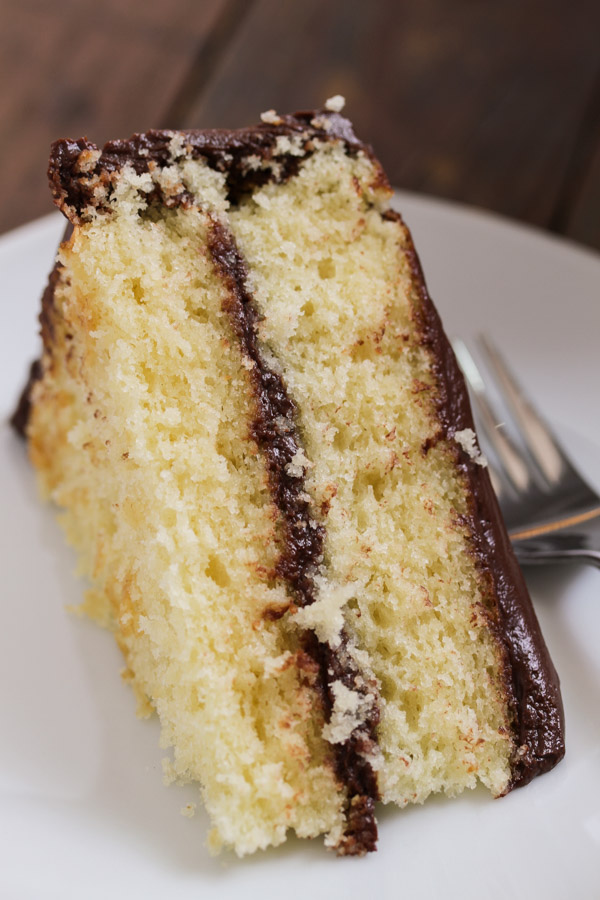
please note this page contains affiliate links, which means that if you make a purchase after clicking from here, i will earn a small commission from amazon at no additional charge to you. i only link to products that i use and love. thank you for supporting tasty seasons!
Hooray cake! And also, that bottom layer was noticeably tastier than the measured-by-volume-too-floury top layer!
haha, i’m glad it wasn’t just my imagination! thanks for commenting!
Confession: a beautiful, pristine kitchen scale has been sitting in my kitchen virtually unused* (*except when cutting chocolate from a block of Callebaut) because (a) it was an editorial gift, accompanied by “you’d be such a good cook if only…” rhetoric; and (b) I honestly didn’t think it would make a difference. Yesterday, I conducted my own test. Holy smokes, it DOES make a difference! Don’t tell the person who gave me the scale. 😉
ha, your secret is safe with me! i’m glad that my long-winded narrative was sufficiently non-preachy as to inspire you to give the scale a try. 🙂 and thanks for confirming that it does make a difference. honestly, even if it didn’t, i would still bake by weight just because it’s SOOOO much easier.
Kate, I LOVE this line: “or it may sound like some unknowable amount, somewhere between a paperclip and a brick.” That made me laugh out loud and may or may not (ahem) be true of me.
Also, I hear Meredith on the challenge of editorial gifts…yow! But I’m glad it ended up being helpful, despite its checkered past. 🙂 Kate, I think you may have convinced me to invest in one…
And also also, this cake looks amazing. 🙂
ha, yay! it is 100% totally and entirely through baking that i have come to have *any* fondness for the metric system. i’m finally overcoming my traumatic (lack of) introduction to it and realizing that things based on 10s, rather than 16s, make SO much more sense. only took me 23 years…
and i so hope that you do decide to get a scale and even more that you love it! seriously, the ease of clean up… 🙂
and yay cake, as always!
Have been applying scale method to old favorite recipes with *great success* (say that in your best Borat voice). Do you have a favorite website for conversions? Many of the old school recipes in my repertoire (grandma’s hamantaschen, etc.) are by volume only, so I convert as I go along.
yay! this makes my heart so happy! <3
assuming i don't already have it open in a tab, as soon as i type "k", chrome knows that i want to go to the king arthur flour ingredient weight chart, because i reference it all. the. time. it’s rare that i have an ingredient that they don’t cover (or something similar enough).
a word of warning: i have found that occasionally when i am “gramming” a cups recipe, the recipe author wasn’t measuring flour the same way as king arthur (whiiiich is why grams beat cups, because that can’t happen), so i will have to tweak the dry/liquid ratio on the fly, then note the “correct” grams for myself for next time.
but in general, that chart is my non-denominational bible. <3